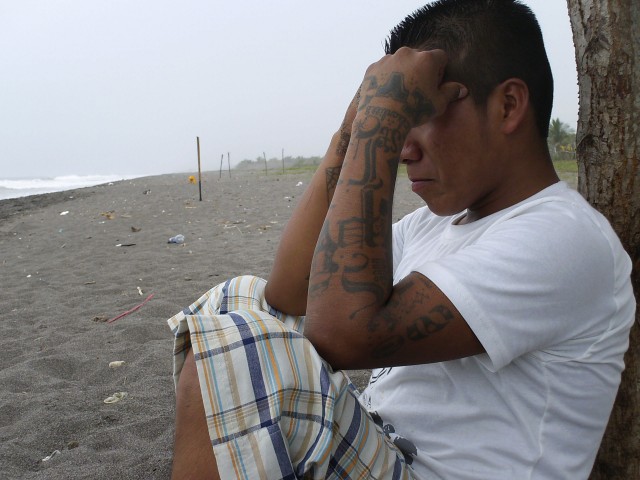
Twelve year old Graciela lives with her two younger sisters and great-grandmother in the rough Honduran community of Zapote Norte. Graciela’s father was a taxi driver who was murdered. Graciela’s mother, a victim of violence, left the family and cannot be found. Graciela’s grandmother moved to the United States and sends money to the family.
The pre-teen is eager to be reunited with her grandmother.
This true story is typical of what Vice President Biden will hear when he meets Friday with leaders of Guatemala, El Salvador and Honduras to discuss the acute humanitarian crisis of unaccompanied minors entering the United States—of which nearly 60,000 have been apprehended this year, 10 times more than in 2011.
The vast majority of these minors, some as young as 4 years old, are making this life-threatening trip through a network of smugglers and without other family members.
It is a growing crisis and a transnational problem on which leaders must collaborate for a comprehensive and compassionate strategy.
While news coverage and the public debate have focused primarily on the children’s perilous journey and the effects of overcrowding in US border detention centers, little attention has been paid to the so-called “push” factors that are causing them to travel north.
The U.S. Agency for International Development recently funded a series of focus groups in Honduras and El Salvador with youth who were at-risk of migration—such as Graciela—to determine some of the “push” and “pull” factors that are causing minors to risk migrating to the United States. While they validated what we know through our work with local governments and youth, it revealed a number of surprises.
Violence in their neighborhoods was cited as one of the leading reasons why children want to flee their countries.
For example, Honduras, a beautiful country that is struggling with gangs and drug trafficking, has one of the highest murder rates outside of a war zone. When a country exceeds 10 murders for every 100,000 residents, it is considered to be an epidemic. In some areas of Honduras, the murder rates may be 100 times that threshold.
As one of our program managers says: “It’s dangerous to be a kid in these communities.”
Compounding the situation are dysfunctional families where there is little adult supervision, high rates of abuse and multiple parental partners. In Graciela’s case, she and her two siblings have three different fathers—and none of them are around.
And yet dysfunctional or not, children who are left behind have a strong desire to be with their families—millions of which are divided by borders and spread among countries. The research confirmed what we know: Today’s Central American communities are inherently transnational.
Meanwhile, the youth in the focus groups also cited the lack of employment, along with deficient educational opportunities, as other leading push factors, which are coupled with the pull factor of perceived demand for labor in the United States.
Finally, our researchers heard the children speak of aggressive marketing by the human traffickers called “coyotes” openly peddling their services in these marginalized communities. Some at-risk children even see it as a viable career opportunity for themselves.
What Vice President Biden and the Presidents from the three Central American countries will not find are easy, quick-fix solutions to this complex, transnational humanitarian crisis. Yet, there are plenty of places to start.
In the short-term, a public awareness campaign in Central American, Mexico and the United States should start at once—particularly since experts estimate that some 100,000 unaccompanied minors could be apprehended next year.
USAID must undertake an in-depth survey on push and pull factors among minors and their families in these communities so long-term solutions can be developed.
The children in the detention centers should receive counseling to help them cope with the traumas they experienced; dysfunctional families at home, the dangerous journey north and the looming threat of deportation, or, in the happier cases, the difficult reunification with family members, many of whom lead hard, fractured lives in the United States.
Mid- and long-term solutions will have to focus on in-country programming, particularly activities that improve schools, reduce violence, rebuild functional families and give young people life- and job-skills.
While the federal government is concerned about being fiscally responsible, the investment needed to make a significant impact is likely relatively low.
For example, Creative Associates International’s 125 Youth Outreach Centers in four Central American countries have reduced murders and violence in the areas they operate. With support from USAID, host country governments, churches and the private sector, these centers operate on only about $75 per youth, a year. Bumping that to a mere $250 to $350 per youth would allow for workforce development programs and youth-led advocacy projects, among other practical activities.
While more and better resourced youth centers will help, they are only part of the solution. Schools, training academies and other programs that attract youth, keep them safe from trouble, and impart to them life- and vocational skills must be supported more holistically and forcefully.
Vice President Biden and his Central American partners likely will discuss the importance of these transnational investments, because they know therein lies the true ticket to a better future for Graciela and thousands of kids like her.
Sean C. Carroll, a former USAID official in the Obama Administration, and Guillermo Cespedes, the former Los Angeles Deputy Mayor for Gang Reduction and Youth Development, are with Creative Associates International, a Washington, D.C.-based global development organization.

